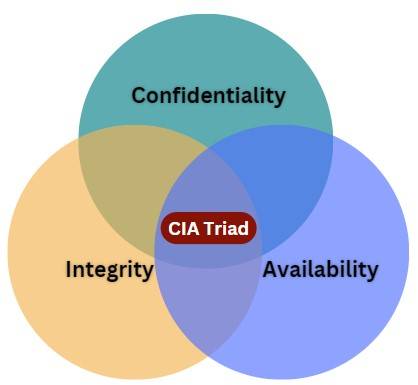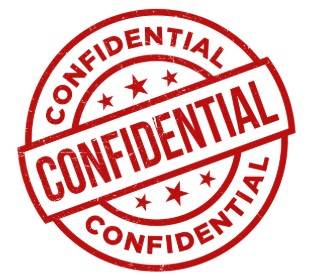What is the CIA Triad? Components, Examples, and More
Think of your data as a treasure chest filled with gold coins. To keep it safe, you need to ensure three things: the chest stays locked (confidentiality), only trusted individuals can access it (access control), and you can detect if any coins are missing or replaced (integrity). Similarly, in information security, the CIA Triad—Confidentiality, Integrity, and Availability—acts as the foundation for protecting sensitive information and ensuring that your digital treasure remains secure, accessible, and trustworthy.
In this piece, we will explore the CIA triad in great detail. But before moving ahead, let's review the topics we will cover.
Table of content (TOC)
- What is the CIA Triad?
- Components of CIA Triad
- Why & When to Use CIA Triad
- Best Practices for Implementing the CIA triad
What is the CIA Triad?
The CIA triad stands for Confidentiality, Integrity, and Availability. It is a common guiding model in information security that is used to create policies and controls to protect organizational data and systems. The triad ensures:
- Confidentiality: Protecting sensitive information (data) from anyone who is not supposed to access it, may it be an individual or a system.
- Integrity: Ensuring the information remains accurate, authentic and reliable.
- Availability: Making network or the information accessible to authorized users when needed.
Note: To avoid confusion with the Central Intelligence Agency (in short, CIA), the CIA triad is also known as the AIC Triad (Availability, Integrity, Confidentiality).
Best-suited Cyber Security courses for you
Learn Cyber Security with these high-rated online courses
Components of CIA Triad
The CIA triad consists of three components: Confidentiality, Integrity, and Availability. Let's explore each of these components with examples and solutions to overcome related issues.
Confidentiality
Confidentiality ensures that sensitive information is only accessible to authorized individuals. It prevents unauthorized access, both intentional and accidental.
Example: If an employee's login credentials are compromised, unauthorized users might access sensitive company data. For example, a hacker may steal user credentials through a phishing attack and gain access to private financial records.
How to Overcome It?
- Encryption: Encrypt sensitive data at rest (stored data) and in transit (data being transferred). For example, AES (Advanced Encryption Standard) can be used to encrypt emails containing sensitive information.
- Access Control: Restrict access to sensitive data based on roles. Use least privilege principles to ensure employees access only the information necessary for their job.
- Multi-factor Authentication (MFA): Even if a password is compromised, MFA adds an extra layer of security. A user may need to provide a fingerprint or a code (OTP) sent to their mobile phone in addition to their password.
Integrity
Integrity ensures that the data remains accurate, authentic, and unaltered, whether during storage or transmission. It prevents unauthorized modifications of data.
Example: An attacker may use the Man-in-the-Middle (MITM) attack to alter a financial transaction record during data transmission. This can cause a huge monetary loss if the modified data is processed.
How to Overcome It?
- Hashing: Before sending data, generate a hash value using algorithms like SHA or MD5. (A hash is a unique, fixed-length string representing the data.) Once the data reaches its destination, use the same hash algorithm (SHA or MD5) to recalculate the hash value for the received data. If the recalculated hash matches the original hash value, it means the data has not been altered during transmission. If the hashes do not match, the data has been tampered with.
- Digital Signatures: These are used to verify the authenticity and integrity of a message. For example, a company might use a digital signature to prove that a contract hasn't been altered after being sent.
Availability
Availability ensures that systems, data, and networks are accessible and functional when authorized users need them. Service disruptions caused by natural disasters or cyber attacks like DDoS, if not prevented, can severely impact an organization's operations.
Example: A ransomware attack could lock down critical files, preventing employees from accessing essential resources, or a Denial of Service (DoS) attack might overwhelm a website, making it unavailable to users.
How to Overcome It?
- Redundant Systems: Use redundant systems and servers to avoid downtime. For example, cloud-based services often mirror data across multiple data centres to ensure availability even during hardware failure.
- Backups: Regularly back up data to external or cloud storage. In case of a breach, such as a ransomware attack, you can restore data from the backup.
- Disaster Recovery Plans: Organizations should have clear and practised disaster recovery plans. It will help them to return to normal operations quickly after an incident.
Why & When to Use CIA Triad
The CIA Triad is essential for developing a comprehensive information security strategy that incorporates security controls and policies to minimize data confidentiality, integrity, and availability threats. In lay terms, using the CIA Triad allows businesses and organizations to build robust security policies that cover all aspects of data protection, from privacy and accuracy to uninterrupted access.
The CIA Triad can be used in multiple scenarios where data security is critical, such as:
- Data Storage and Transmission: When storing or transmitting sensitive data like financial information, personal data, business secrets, etc., the triad ensures that it remains secure, tamper-proof, and accessible when needed. CIA triad example: Online banking, e-commerce transactions, and healthcare records.
- Designing Security Protocols: When building secure systems, networks, or applications, using the CIA Triad helps ensure all areas - confidentiality, integrity, and availability, are addressed in the system architecture. CIA triad example: Developing an encrypted messaging app, cloud storage solution, or secure payment gateway.
- Incident Response and Risk Management: When responding to potential security threats or breaches, the Triad helps guide decision-making by focusing on the confidentiality, integrity, and availability of affected data. Example: During a ransomware attack, restoring data integrity and ensuring business continuity would be critical.
- Compliance and Regulatory Requirements: Many industries (e.g., healthcare, finance, and government) have strict data protection regulations (GDPR, HIPAA, PCI-DSS compliance) that require organizations to uphold confidentiality, integrity, and availability.
Best Practices for Implementing the CIA triad
Here are some of the best practices for implementing the CIA triad:
- Mandate multi-factor authentication (MFA) for access to sensitive systems
- Limit access to sensitive data based on job roles
- Encrypt sensitive data to ensure unauthorized users cannot access it
- Keep systems and software updated to prevent vulnerabilities that could impact data integrity or availability
- Implement hashing and checksum techniques to verify data has not been tampered with
- Continuous monitor systems and generate logs to detect suspicious activities
- Develop and test disaster recovery plans to restore systems and data after an incident
- Train staff on security best practices and safeguarding sensitive information
- Conduct regular audits and penetration tests to identify and address security weaknesses.
Must Explore Articles:




Anshuman Singh is an accomplished content writer with over three years of experience specializing in cybersecurity, cloud computing, networking, and software testing. Known for his clear, concise, and informative wr... Read Full Bio






